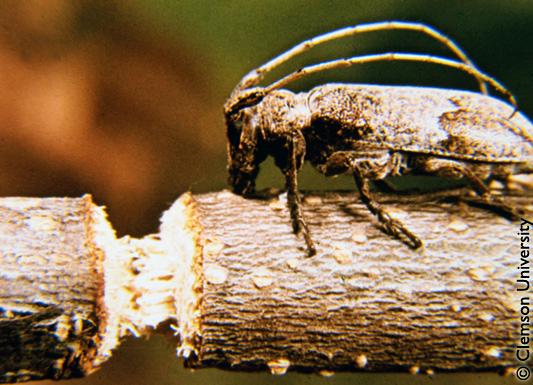If something appears to be chewing off the ends of tree branches in your landscape, that something is most likely a twig girdler.
Twig girdlers are long horned beetles - so named because their antennae are longer than their body. It is a pest of pecan and hickory trees, but may also attack persimmons, hackberries and other hardwood trees.
Adults do the damage
Adult beetles girdle twigs and small branches causing the ends to break away or hang loosely on the tree. It is not uncommon to see the ground under infested trees almost covered with twigs that have been cut off.
The bugs don’t usually hurt adult tree unless they are munching in pecan orchards where the loss of branch tips could reduce nut production in the following few years. They can be detrimental to young trees by causing a deformity in branching, but the pests won’t kill the tree.
Most girdled twigs are from 1/4 to 1/2 inch (occasionally up to 3/4 inch) in diameter, and 10 to 30 inches long.
Cuts from outside
The nature of the girdle itself distinguishes the twig girdler from other branch pruners and squirrels. The twig girdler’s cut is the only one made from the outside of the branch.
The female lays her eggs in the tips of the branch, and then chews around the branch leaving a little wood attached in the center. This usually breaks off in the wind.
The cut end of the branch looks like mini-beaver damage. Since the twigs are girdled while the leaves are present, the severed twigs retain the leaves for some time.
Control by destroying eggs
Look closely at the fallen branch, and you will see tiny holes where the eggs were laid. The holes will usually be by a bud scar or near a side shoot.
The best way to control twig girdlers is to pick up the twigs and discard them since the larvae develop and pupate inside them. Insecticide is rarely justified or practical.
For more information on controlling pests in home landscapes, find University of Georgia Cooperative Extension publications online at www.caes.uga.edu/publications.








